Artifacts of Age
A Fragmentary Recollection of Fantasia 2015


Festival season means I spend a lot of time eating take-out on the streets, in line-ups, in my seat waiting for the next screening, etc. It’s a chance for me to reconnect with my roots. My earliest days in Montreal were spent living downtown hovering around Concordia as a grad student. My favourite place back then was Soup et Nouilles on the corner of St. Marc and Ste. Catherine at the end of my block. Countless pounds of vegetable fried noodles were consumed in my tiny apartment with the a/c blaring. When Fantasia moved to Concordia in 2003 I had one blissful year living less than 5 minutes on foot to the venue before I finally left the hood. My visits to Soup et Nouilles were fewer and far between after that, and by the summer of 2015 it had been quite some time since I had them. Sadly, this particular batch didn’t quite do it for me. Tastes change, memory lies, stomachs get grumpy. Somewhere in there lies a metaphor for the struggle that cinephilic fetishes must undergo on the path from youthfully uncritical exuberance to the wisdom we’re told arrives with age. Do we really still like all this splattery mess that we enjoyed so much in younger days? Shall we dwell in the past at the expense of progress? Shall we progress at the expense of our innocence? Can we do both? Neither? These are questions posed by many of the films in Fantasia’s 19th edition, the last of its teen years, real adulting looming large on the horizon. And these questions are often prompted by way of artifacts around which the films’ investigations coalesce. Let’s consider a few.
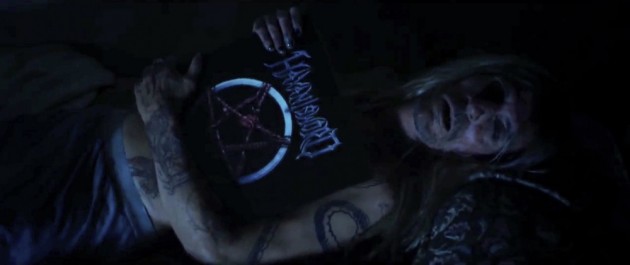
In Australian spoof Deathgasm an ageing rock legend Rikki Daggers lies holed up in a barricaded house clutching a copy of his most infamous record, pressed in an edition of 666, numbered in blood. A washed up hero unable to let go of fading glory? That’s what he wants you to think. Turns out this particular sleeve is a disguise, housing not limited lacquer but a unique copy of sheet music capable of opening a portal to the demon realm.
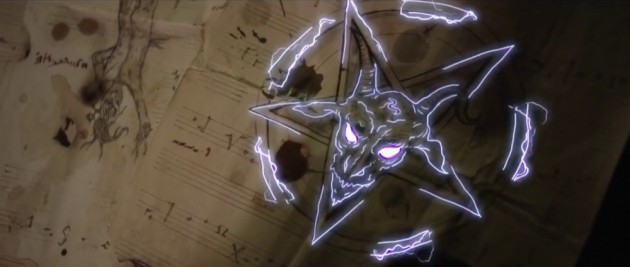
A pair of hardcore fans break in to discover if the rumor of his occupancy is true. They discover more than they bargained for. With otherworldly agents close in tow to reclaim the sheets, the rock star entrusts the sacred package to the younguns – who proceed to use it as the basis for new material for their garage band. And so the demon realm opens, their parents’ nightmares externalized for the world to see.
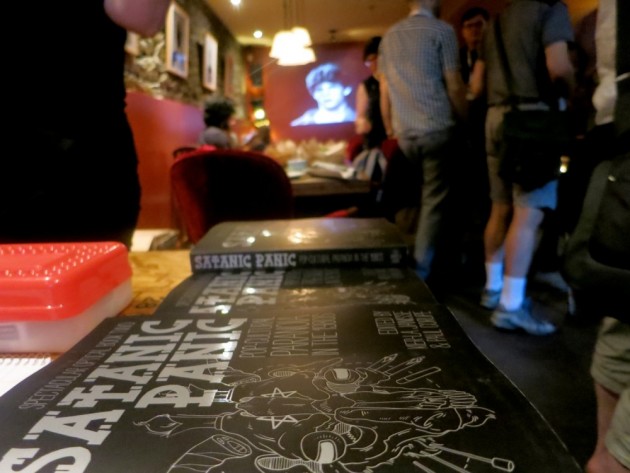
Deathgasm was the official tie-in film with the book launch for the second volume published by Spectacular Optical Press run by Kier-La Janisse. Satanic Panic, edited by Janisse and Paul Corupe, is a compendium of essays, information and esoterica relating to the terror that 80s horror films struck in the hearts of Regan’s America. At once comical and tragic, this was a time when the most ridiculously overzealous horror fare, the age of the “video nasties,” could yield public hysteria. See the epic Paradise Lost trilogy to follow how badly things can go wrong when an artistic genre like heavy metal serves as scapegoat for the real evils of the world dressed up as your friendly next door neighbour.
Deathgasm pokes fun at the often serious subject covered exhaustively in Satanic Panic, a love letter to a different era. It’s not as easy to be subversive today as neoliberal capitalism has discovered that anything with a scene attached can be made profitable, and so it has become. Cult followings are no longer feared; they are co-opted. But there was a time when this stuff scared the shit out of people. In the face of austerity’s ravage of the 21st Century, the fact that we can laugh about the “satanic panic” now might, in the end, be the scariest part of the whole story.
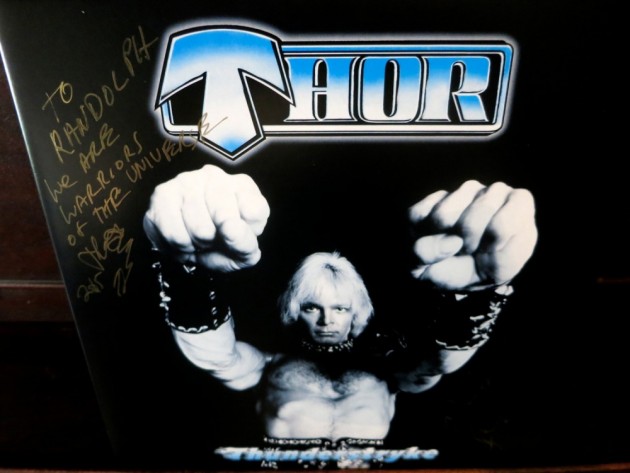
Deathgasm was introduced by real-life ageing rock legend Jon Mikl Thor, in the house for a later screening of I Am Thor, a documentary covering his own attempt at a come-back following the abrupt end of a promising moment in the late 1970s. But this time it was I clutching the vinyl I had just scooped up from the merch table.
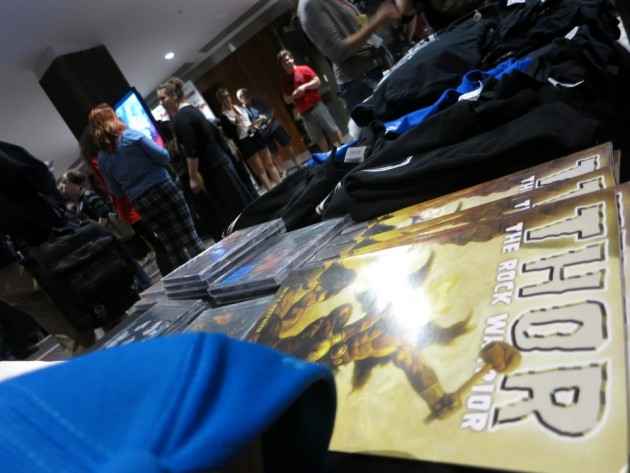
I’ll admit to not having known nearly enough about Thor going into this thing, so I didn’t really know what I was buying. Turns out that this particular release is a good introduction to Thor’s arc across the ages as covered in the documentary, a newly issued compilation featuring a mix of unreleased tracks from his 1970s studio sessions and newly recorded material. There are clear and present differences between the two eras, a limberness to the older tracks absent from the newer ones that are comparatively stiff, much like his physical posturing throughout the film.
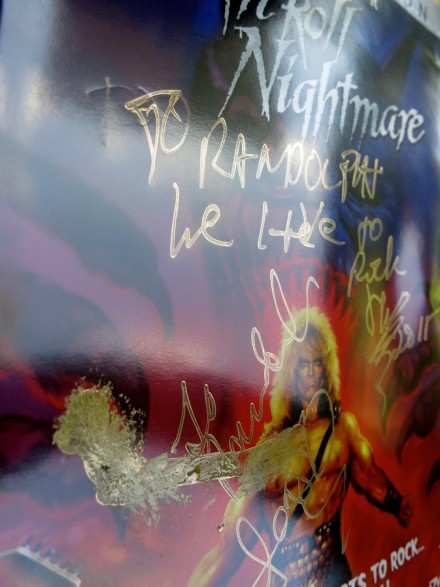
His brief stint in the movie business never took off either. Apparently Stan Lee had wanted him for the lead in Thor (obviously!), but that film never happened until recently, too late for Hollywood’s culture of youth to embrace an aging protagonist. His 1986 vehicle Rock’n’Roll Nightmare was an attempt to put himself on the world stage he had hoped his ill-fated tour would bring. It didn’t work, but it has enjoyed steady appreciation as a cult favourite, recently given a nice reissue treatment by the good people at Synapse (which he was also happy to sign for me, malfunctioning gold pen and all).
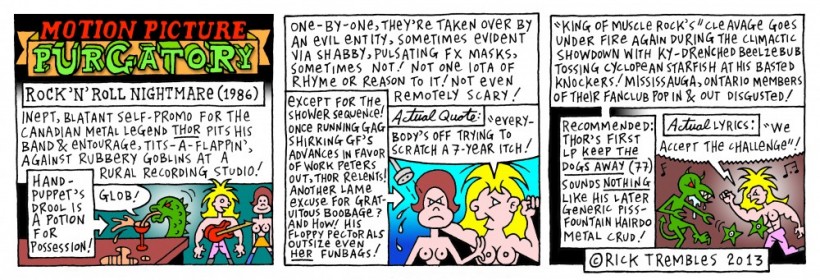
Reprinted courtesy of Rick Trembles. First published on the Canuxploitation site.
But I Am Thor doesn’t dwell on the failures. Indeed, years of depression and suicide attempts are almost entirely elided as we follow Thor on what has been, in reality, a steady rise in popularity rather than a comeback. We watch as he tirelessly flaunts his goods at endless comic conventions, bar gigs and music festivals. Europe has taken notice, and several festivals there have proven his most successful outings to date.
The film ends with coverage of Thor’s appearance at a festival dedicated entirely to him, his biggest and most appreciative audience ever. He went in set on this being his last performance, largely for health reasons. Driving home afterwards his bandmate tells him “you forgot to announce that it was your last show!” He answers, “yeah, well, I’ve had some second thoughts about that.” And then, after the screening ended, he played a show for us with his long-time guitarist Steve Price.
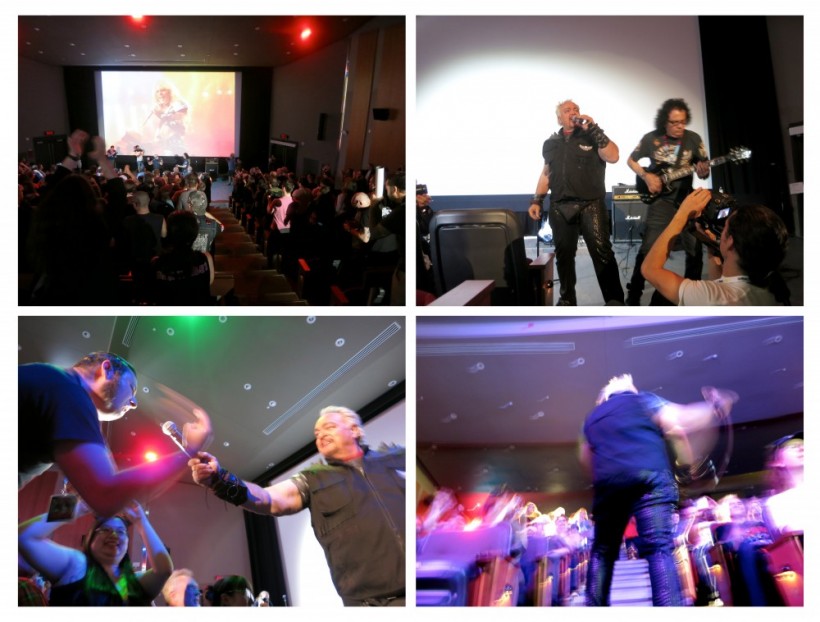
Perhaps the saddest part of Thor’s trajectory is that, despite his increasing popularity in recent years, he trades on the currency that his early image holds. None of his newer albums feature current images of himself; they all cull the archive or render his early visage in cartoon form. While his body was in better shape back then, his career was arguably not. Rather than trying to grasp at former glory, he embodies that mode of nostalgia that seeks a past that never was. He’d like his old body to enjoy the success of his recent efforts. But he’s no time traveler.
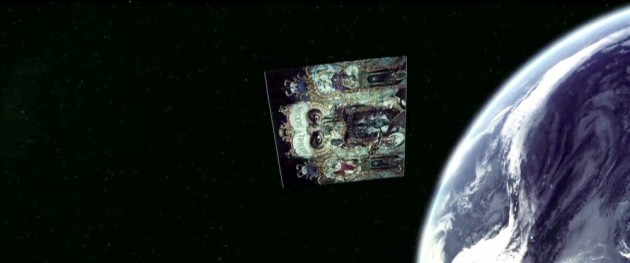
Fast-forward an untold measure of time to the post-apocalyptic Ethiopian landscape of Crumbs, mysterious spacecraft lingering endlessly on the horizon. Beneath its gaze, locals gather artifacts from another era. A vinyl copy of Michael Jackson’s Dangerous. A Teenage Mutant Ninja Turtle action figure. A Power Rangers sword. These markers of 20th Century pop culture serve as the currency of choice.
As characters listen their way through the landscape, in search of the signal they believe is being sent to them by the spacecraft, eventually they find their way to the lair of none other than Santa Claus, filled with the sounds of the bowling alley that recently sprung mysteriously back to life after many years out of commission. “Have you already made your list?” he asks, as though his view of human culture has been that of a spacecraft monitoring mainstream media broadcasts.

Santa marks the break between the objects the people exchange for their survival needs and the culture they aim to hold onto as resistance against a backslide into the height of consumerist enterprise that, presumably, led to the end of the capitalist reign. Were the aliens sent to rekindle the factories that manufactured desire and consent? At least one resident sees the aliens as her only way out. “All I want for Christmas is to be on that spaceship when it leaves.”
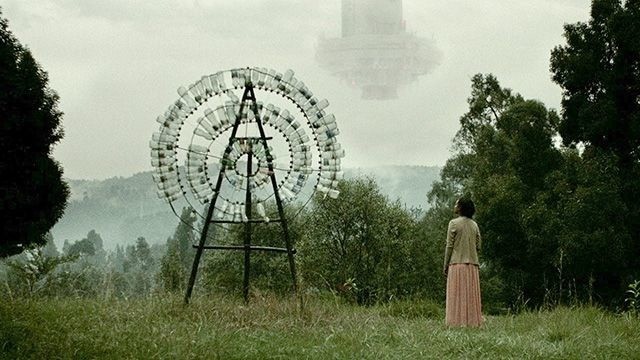
Time to stop looking back.

Quentin Tarantino likes to use records from his personal vinyl collection to source the music he so famously drops into his films. This practice not only plays each track as intertextual gateway as Tarantino deliberately references the films for which they were originally written; it also infuses the films with the materiality of Tarantino’s own fanboyism. For someone with budgets enough to clear music rights above board he could easily get permission to use master recordings for most things. His choice not to is about authorial fingerprinting: we hear not just any copy of the music he has selected for his films, we hear his copy.
No such choice available in Turkey during the years known as Yeşilçam, an era of domestic filmmaking covered by the excellent documentary Remake Remix Rip-Off: About Copy Culture and Turkish Pop Cinema. Within a generally depressed economic environment, hindered by quotas on the amount of raw film stock that could be imported, using material from other films helped flesh out domestic projects. Without any regional copyright restrictions, they were slapping whatever music they wanted onto these films, culled directly from whatever copies they had on hand. No permission to get master tapes here. And they would do the same with bits of films themselves, hacking clips out of a rented Star Wars print before sending it back to the distributor, then using that as rear-projection backdrop and insert filler for their own reworked version of the story.
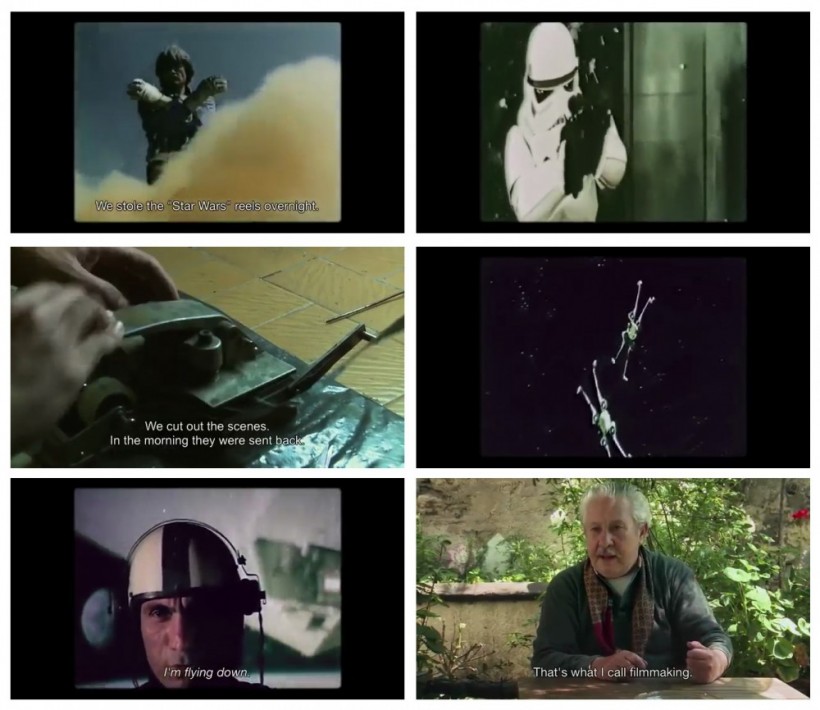
They infused these remakes, remixes and rip-offs with local Turkish cultural references, weaving a rich tapestry that openly acknowledged the relationship between regional circumstances and global realities. While there was commercial motivation, these bits and pieces were not remnants of a distant past now gathered solely for their exchange value en route to escaping to another world entirely. Nor were they fetishized markers of authorial winkology. This was the material that crossed their paths at the right moments, and they lovingly worked these varied cultural fragments into their own collective consciousness, helping define their own culture in the process.
Like the films it documents, Remake Remix Rip-Off employs creative editing to illustrate its topic and to drive home the punchline: in the midst of images of grand theatres being demolished the film cuts to a shot of John Dillinger being assassinated from a Turkish production as we learn about how the onset of new copyright laws and an industrial shift to an emphasis on porno films brought an end to the Yeşilçam era. Just as easily as so much of their footage came, so too did it go, so many of the films now lost to a lack of archiving infrastructure.
Interestingly, a good chunk of the films were sold to Germany for TV. A shot of a German collector’s cabinet full of mint condition Betamax copies of Yeşilçam-era productions yielded a collective gasp from the Fantasia crowd, exalting the same geekery that prompted me to plunk down $30 for a VHS re-issue of Troma’s Nuke ‘em High a couple years back. Lloyd Kaufmann signed it by doodling a penis on the female protagonist’s crotch. The boy I was when I saw my first Troma film says: “Awesome!”
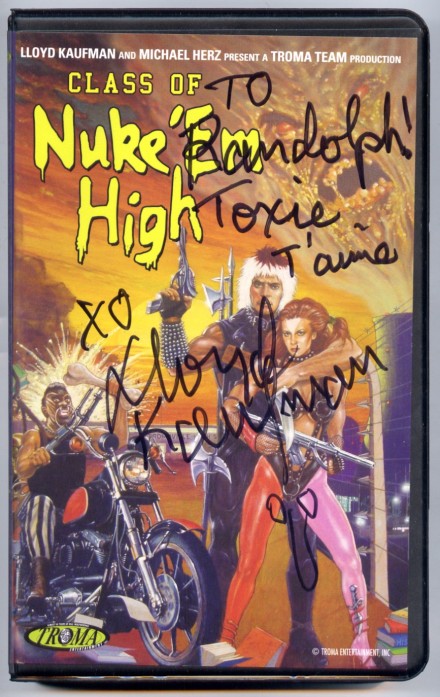
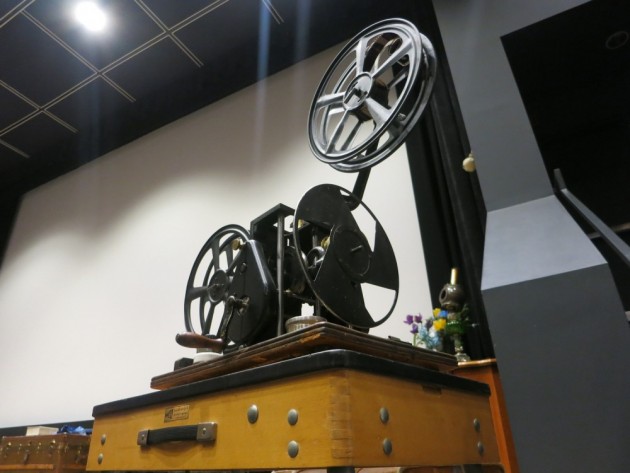
This projector, the very unit featured in Scorsese’s Hugo, was the centerpiece of the Magic and Méliès event hosted by Montreal’s Film Society. Philippe Spurrell programmed an evening of films by and about the master filmmaker, interspersed with a live magic show lending some of the carnival flavour of how films were often presented in the time of Méliès himself. Committed to screening prints, there is an artifactual quality to the Film Society’s events, which was well on display here.
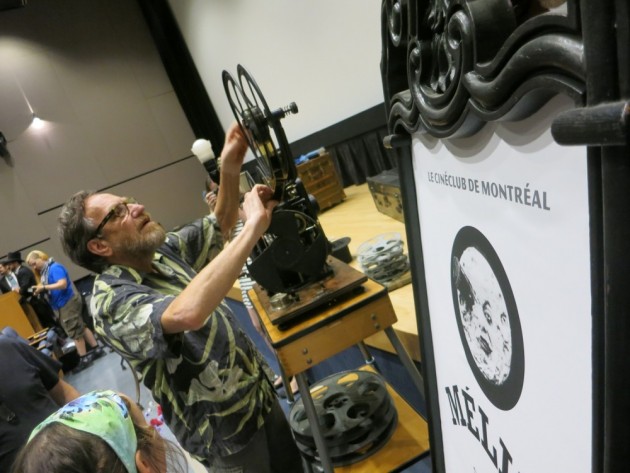
Long before Hugo famously caught up with an ageing Méliès to creatively stage some of his production processes and, ultimately, recast some scenes in modern 3D, director Georges Franju made his own documentary Le Grand Méliès. In the words of Méliès’ granddaughter, who narrated the film, we learn of the filmmaker’s early days as a magician with some interesting reconstruction of his working methods and studio practices. The film ends rather abruptly with the news that Méliès burned his film collection and announced the end of his career, but this enhanced the significance of the projector from Hugo in house as those in the know could make the intertextual connection between Franju’s film and that of Scorsese, the latter picking up where the former left off.
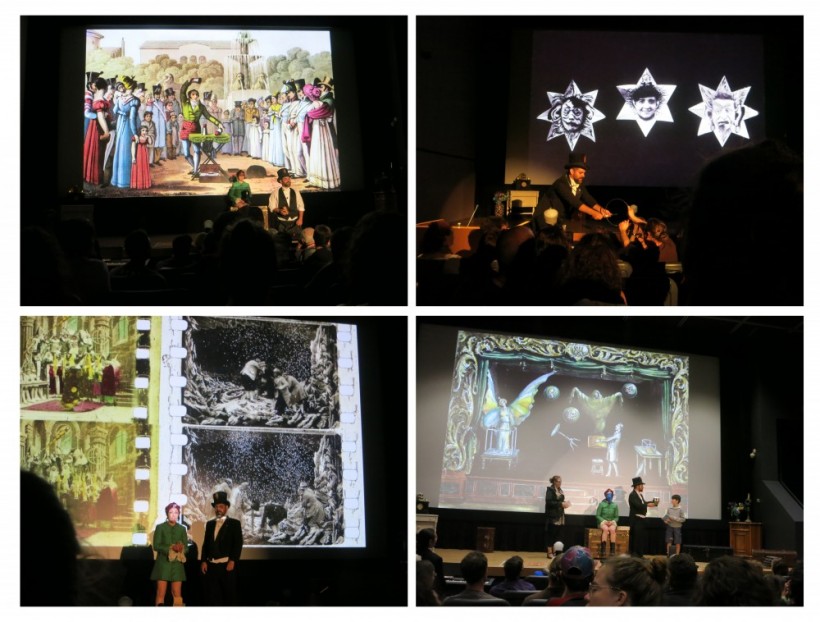
The magic show prompted reflection on the differing natures of live performance and the cinema, each of which requires very different techniques for illusionism. When standing before a live audience you can’t hide a cut to make something transform or disappear. On the flip side, the type of sleight-of-hand that impresses in person often underwhelms when translated to the silver screen. Part of Méliès’ genius was in his keen understanding of the balance between these two modes, and while his contemporaries were out filming street scenes and stage plays he brought innovations to the cinema to make magic work in ways that helped define the medium-specific qualities of the cinema for all those to come after.
The evening also prompted reflection upon what continuing value there might be in screening prints for the sake of prints in this age of continually improving digital capture and exhibition. When Fantasia first started screening films from video sources it was appalling. I would actively avoid screenings with the “HD” note in the catalog. How far we’ve come. Digital screenings in general, and at the festival in particular, are now the norm, and are frequently spectacular. In fact only ONE 35mm print was screened this year, Buddha’s Palm, the festival’s annual showcase from the Shaw Brothers catalogue. Are we losing anything here? Of course if a film is shot digitally, as most are nowadays, then digital projection is perfectly authentic. An evening like Magic and Méliès, on the other hand, is all about the birth of cinema itself, and the medium specificity that lies therein. Yet there are gorgeous digital restorations of the Méliès films now, which are superior in many ways to the prints on display here – none of which really shined until the very last, saved for the end on purpose. Are we valuing film in situations like these as materialistic fetish? Refusing to let go of some aspects of the past at the expense of appreciating how new technologies can reveal that past like never before?

This year marked the inaugural Barry Convex Award, created by Kier-La Janisse and named after the head of the fictional Spectacular Optical company in David Cronenberg’s Videodrome that Janisse adopted for her website and publishing company. In her words, “In this robust new era of Canadian genre film, the subversive potential of Canadian cinema is now being appreciated in ways it wasn’t during the initial tax-shelter era that produced Videodrome. And it’s time to recognize that.” 1
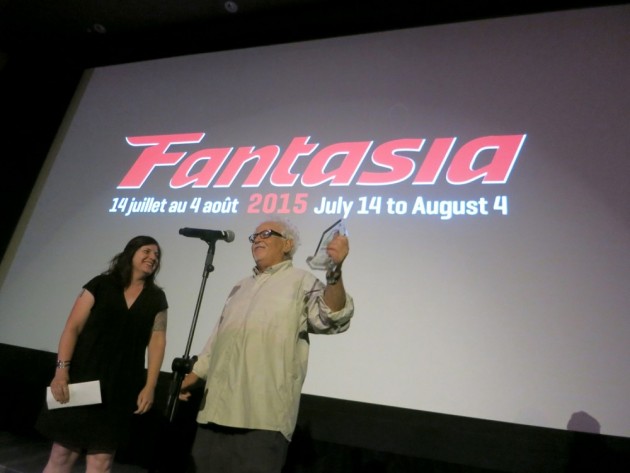
Larry Kent was chosen for the first award as that rare filmmaker whose earliest work in the 60s helped to kick-start that era through the success of his early productions, and who continues to make films well into his 80s now. His latest, She Who Must Burn is inarguably his most severe film to date, a lambaste of Christian fundamentalist sects and their war on women’s rights in the 21st Century. I interviewed Kent about the film at length last year with my colleague Donato Totaro 2 before it premiered at Fantasia. Having now seen it on the big screen, I can attest to its power and am happy it has been formally recognized. Sometimes the best work comes with age.

Two heterosexual couples, two babies. One couple is older, the other is younger. One baby is a doll, the other is still in the womb. Both women obsess over their children, while both men have one foot out the door. The older woman hosts a doll club where women come to show off their new plastic infants and share tips on love and care. During one of these meetings her man disappears. We don’t know what happened, and are left to wonder if he flew the coup to find a more satisfying life, or if his disappearance might have something to do with the mysterious sounds and flashes of light people have been experiencing around town of late. And that giant Greek head that’s been floating down the river.
The younger woman sees visions of horses and feels compelled to find her way through the forest to the site of many missing persons lying in fetal positions in the snow. Her pregnancy brought her attention to the powers that be. The older woman hears about the site on the news, and is convinced that her husband must be among those found in the clearing. He is not, but she identifies one John Doe as though he is who she sought, ready to take him home and care for him as her own, as false a connection as that which she had with her doll.

But who is to say they don’t belong together, any more or less than her doll? Are there aliens? Did they come to attempt resolution of communication breakdowns between intimates? The climax features a stroboscopic digital glitch-out of epi(lepti)c proportions, suggesting a cosmic jamming of terrestrial consciousness in the face of failing relationships. Never too old to wipe the media clean and start fresh.

This book sat on the voting table for a while outside the De Seve cinema, just in case anyone wanted to brush up on what makes good style before casting their ballots for their favourite films. Did any of the winners measure to S&W’s standards? You be the judge. My pick for best of the fest did not make any of the official award lists: Catch Me Daddy. But Strunk and White might just approve.
A stark, unrelenting and malicious journey through a young lady’s flight from patriarchal authority in an attempt to come of age – with daddy’s goons in close pursuit. No “succession of loose sentences” here. “Active voice” is in full force, maintaining a consistency of stylistic tone that grounds the film in the present moment. Any “needless words” were omitted long before the final cut was locked. All “co-ordinate ideas” are indeed expressed in “similar form.” And if the film were a sentence, it definitely saved its “emphatic words” for the end, a troubling conclusion that highlights cultural tension in today’s U.K. that takes on added weight in the wake of Brexit. Essential viewing.
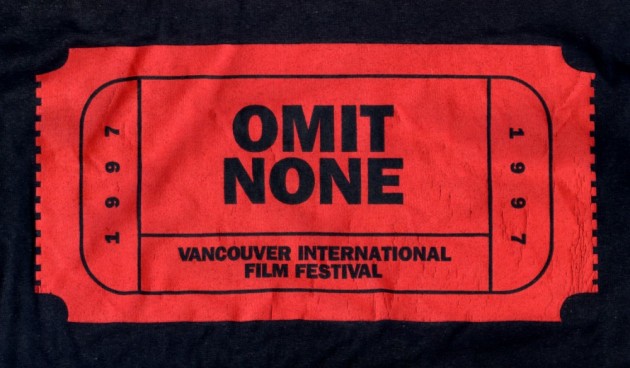
I bought a Fantasia shirt this year for the first time since 2003. I grew up expressing my tastes through branded apparel, and I haven’t changed much – although now I spend my summers wearing almost exclusively Grateful Dead related attire. I make an exception during festival time, and one of my favourites to break out during Fantasia is this “Omit None” shirt from the 1997 edition of the Vancouver film festival, site of my coming of age as a cinephile and the place where I honed my ass muscles to withstand multiple screenings in a row. There I would set my record for consecutive theatrical feature film screenings: seven. This hasn’t been possible to date at Fantasia where, despite my continual pleading, they don’t have very many daytime screenings. With three young children now it’s easiest for me to see films during the day when they’re in daycare or off on some grandparental adventure. Most festivals have screenings starting in the morning, and I’d love for Fantasia to reach this level, though obviously the famous Fantasia energy tends only to emerge as the sun goes down.
Nevertheless, the ethos of “omit none” is adaptable to whatever any given festival has to offer. See as much as you can. When I first started going to Fantasia I would aim for 40+, which was doable with no responsibilities other than writing an MA thesis (one reason it took me four years to complete). Since having kids I’ve spent most years happy to get to 10. Slowly I’ve been working my way back up as infancy passes and it’s easier for me to leave them with my partner for the evening. Last year I got past 30 for the first time since the kids were born. Hurrah! A far cry from omitting none, but the spirit is there.
What I’m most looking forward to in 2016 is the fact that Fantasia has added a considerable number of weekday screenings during the afternoons. Perhaps my pleas have been finally heard? Maybe I can get those numbers up and reclaim some former glory after all…

Notes
- Spectacular Optical. http://www.spectacularoptical.ca/2015/07/spectacular-optical-initiates-new-barry-convex-award/ ↩
- Offscreen. http://offscreen.com/view/she-who-must-burn-interview-with-larry-kent ↩














